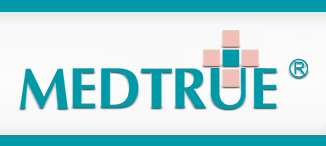The medical disposable 3 way stopcock is an essential medical device used in the healthcare industry. It plays a significant role in ensuring the safe and efficient administration of fluids, medications, and blood products to patients. This article will explore the various aspects of a medical disposable 3 way stopcock, including its construction, working principle, applications, and safety features.
1. Overview of medical disposable 3 way stopcocks2. Construction and working principle3. Applications of medical disposable 3 way stopcocks4. Safety features of medical disposable 3 way stopcocks5. Conclusion
1. Overview of medical disposable 3 way stopcocks
A medical disposable 3 way stopcock is a valve used to control the flow of fluids in a medical setting. It is designed to connect multiple intravenous (IV) lines or catheters, allowing healthcare professionals to easily switch between different fluid sources or medications without having to change the entire setup. This device is commonly used in critical care units, operating rooms, and during long-term patient care.
3 way stopcocks are typically made of medical-grade plastic and are designed for single-use to prevent cross-contamination and infection. They consist of a central hub with three ports, each of which can be connected to an IV line or catheter. The hub also contains a rotating mechanism that allows the user to control the flow of fluid through the selected port.
One of the key advantages of using a medical disposable 3 way stopcock is the ability to easily switch between different fluid sources or medications without having to change the entire IV setup. This not only saves time but also reduces the risk of infection and complications. Additionally, the compact design of the 3 way stopcock allows for more efficient use of space in busy medical settings.
2. Construction and working principle
The construction of a medical disposable 3 way stopcock is designed to ensure safety, reliability, and ease of use. These stopcocks are typically made from high-quality medical-grade plastics, such as polycarbonate or polyvinyl chloride (PVC), which are compatible with a wide range of medications and fluids. The materials used in the construction of these stopcocks are also designed to be resistant to chemical interactions and to withstand the pressures associated with intravenous (IV) therapy.
Each stopcock consists of a central hub with three ports, which can be connected to IV lines or catheters. The hub is designed to be easily rotated, allowing the user to select the desired port for fluid administration. The ports are typically luer-lock compatible, ensuring a secure connection to IV lines or catheters. Some stopcocks may also feature additional ports, such as a pressure monitoring port or a blood sampling port.
The working principle of a medical disposable 3 way stopcock is based on the rotation of the central hub, which controls the flow of fluid through the selected port. When the hub is rotated to align with a specific port, the flow of fluid is allowed to pass through that port while the other ports are closed off. This is achieved through a series of internal seals and valves that prevent backflow and ensure a one-way flow of fluid.
In addition to controlling the flow of fluid, the 3 way stopcock also serves as a convenient way to switch between different medications or fluid sources without having to change the entire IV setup. This is particularly useful in critical care settings where multiple medications may need to be administered simultaneously. By using a 3 way stopcock, healthcare professionals can easily switch between different medications by simply rotating the hub to the desired port.
It is important to note that the use of a medical disposable 3 way stopcock requires proper training and understanding of the device’s functionality. Healthcare professionals must be familiar with the different ports, their intended use, and the appropriate techniques for rotating the hub to ensure safe and effective fluid administration.
3. Applications of medical disposable 3 way stopcocks
Medical disposable 3 way stopcocks are versatile devices used in various medical applications. Their primary function is to control the flow of fluids, medications, and blood products in a safe and efficient manner. These stopcocks are commonly used in critical care settings, such as intensive care units (ICUs) and operating rooms, where precise control of fluid administration is crucial.
In addition to their use in critical care, 3 way stopcocks are also employed in outpatient procedures, such as chemotherapy and dialysis. These procedures often require the simultaneous administration of multiple medications or fluids, and the use of a 3 way stopcock allows healthcare professionals to easily switch between different sources without interrupting the treatment.
Furthermore, medical disposable 3 way stopcocks are increasingly being used in home healthcare settings. With the rise of telemedicine and remote patient monitoring, more patients are receiving care at home. In these situations, 3 way stopcocks provide a convenient and safe way to manage IV therapy, ensuring that patients receive the necessary medications and fluids without the need for frequent visits to a healthcare facility.
4. Safety features of medical disposable 3 way stopcocks
Safety is a top priority in the design and use of medical disposable 3 way stopcocks. These devices are equipped with several safety features to prevent complications and ensure patient well-being. One important safety feature is the presence of a luer-lock connection, which provides a secure and leak-proof attachment to IV lines or catheters. This helps to prevent accidental disconnection and reduces the risk of air embolism or fluid leakage.
Another safety feature is the color-coded design of the stopcock ports. Each port is typically marked with a different color, indicating its intended use. For example, one port may be designated for the administration of medications, while another is reserved for fluid infusion. This color-coding system helps to prevent confusion and ensures that healthcare professionals can easily identify the appropriate port for the desired treatment.
In addition to these features, medical disposable 3 way stopcocks are designed to be easy to use, even in high-pressure situations. The central hub is typically ergonomically shaped, allowing for easy rotation even when wearing gloves. Some stopcocks also incorporate a locking mechanism to prevent accidental rotation of the hub, further enhancing safety during use.
It is important for healthcare professionals to be familiar with the safety features of medical disposable 3 way stopcocks and to use them correctly. Proper training and understanding of the device’s functionality are essential to ensure safe and effective patient care.
5. Conclusion
In conclusion, medical disposable 3 way stopcocks are essential devices in the healthcare industry. Their construction, working principle, applications, and safety features make them invaluable tools for healthcare professionals. By understanding how these stopcocks work, medical practitioners can ensure the safe and efficient administration of fluids and medications to patients.
As the demand for medical disposable 3 way stopcocks continues to grow, it is important for manufacturers to prioritize quality and safety in their production. Regular testing and adherence to industry standards are crucial to ensure that these devices function properly and do not pose any risks to patients.
In summary, medical disposable 3 way stopcocks play a vital role in modern healthcare. Their ability to control fluid flow, switch between different medications, and ensure patient safety makes them indispensable in a variety of medical settings. With ongoing advancements in technology and design, these stopcocks will continue to evolve and improve, further enhancing patient care and outcomes.











